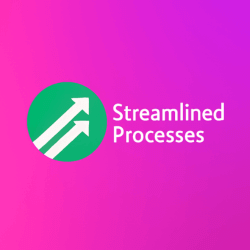For Subscription Billing And Management Platforms, see our main page here.
What Are Subscription Billing And Management Platforms?
Subscription Billing And Management Platforms are software solutions that help businesses automate and manage recurring billing, customer subscriptions, and revenue operations. These systems eliminate manual invoicing, track customer usage, and support variable pricing models such as freemium, tiered, usage-based, and hybrid structures.
Today, companies across SaaS, digital publications, subscription boxes, and even fitness studios rely heavily on these platforms. As a result, managing the complexities of renewal cycles, dunning processes, tax compliance, and global currency support becomes seamless.
Why Modern Businesses Depend on Subscription Management
Traditional billing systems weren’t built for recurring models. Consequently, Subscription Billing And Management Platforms evolved to fill that gap. They not only process recurring invoices but also provide deep analytics, customer lifecycle management, and tools for compliance and revenue recognition (ASC 606 / IFRS 15).
For example, a SaaS platform offering three pricing tiers across ten different countries must account for tax rules, VAT, and currency conversions. Platforms like Chargebee and Recurly make this both manageable and scalable. Moreover, they help finance and customer success teams understand churn trends and revenue growth in real time.
Top Features to Look for in Subscription Billing And Management Platforms
Not all solutions are equal. Before choosing a platform, it’s important to assess features based on your company’s needs. Here are some must-haves:
- Automated Invoicing: Generate and send invoices automatically based on billing cycles.
- Flexible Pricing Models: Supports trials, discounts, promotions, and custom price tiers.
- Dunning Management: Automated follow-ups for failed payments to reduce churn.
- Customizable Checkout: Seamless customer signup and self-service portals.
- Integrations: Sync with CRMs (like Salesforce), ERPs, and tax tools.
- Analytics: Real-time dashboards to monitor MRR, churn, and customer segments.
Most importantly, good platforms should grow with your business. That includes handling scale-ups, global expansion, and complex use cases without adding operational friction.
Key Industry Players and Their Strengths
The market is filled with both enterprise and SMB-focused platforms. Each offers unique strengths based on industry fit and pricing flexibility.
- Zuora: Known for serving enterprise clients with complex billing and ERP needs.
- Chargebee: Offers powerful tools for SaaS companies with quick setup and ease of use.
- Recurly: Strong in payment recovery and international currency support.
- Stripe Billing: Seamless with other Stripe services, ideal for developers and startups.
- Paddle: Tailored for SaaS with built-in tax compliance in over 200 countries.
While Recurly may excel in dunning optimization, Zuora might suit businesses that need complex contract lifecycle management. Similarly, startups seeking simplicity might opt for Stripe Billing due to its developer-friendly APIs and global reach.
Trends Shaping the Future of Subscription Billing
The need for Subscription Billing And Management Platforms is growing rapidly. This growth is being fueled by changes in customer behavior and technology. Customers now expect seamless, user-friendly billing experiences. Therefore, businesses are being pushed to adopt modern, agile platforms to stand out.
Some emerging trends include:
- AI-powered revenue forecasting and churn prediction
- Embedded finance features like on-demand credit and invoicing
- Increased demand for usage-based billing models in SaaS
- More stringent global tax and GDPR regulations
In the same vein, AI and automation are helping reduce manual errors, optimize cash flow, and identify customer intent signals. Consequently, businesses can create hyper-personalized offers and increase lifetime value (LTV).
Common Mistakes to Avoid When Choosing Your Platform
While the promise of automation is appealing, it’s easy to overlook key aspects. Some businesses chase shiny features, but forget about operational fit. To clarify, here are a few frequent missteps:
- Overpaying for unnecessary features that don’t align with company size or needs
- Choosing platforms lacking proper integrations with your current tools
- Not accounting for future scalability, leading to quick vendor churn
- Neglecting global compliance and tax automation, which can cause legal issues
Ultimately, mapping your customer, billing models, and growth trajectory to the platform’s capabilities is essential.
Real-World Success Stories Using Subscription Management Tools
Let’s look at how companies have scaled using these platforms:
- Canva: Partnered with Chargebee to expand business users globally without losing billing efficiency.
- Monday.com: Leveraged Recurly’s dunning to improve payment recovery by 20% within six months.
- Unbounce: Saw a 35% decrease in churn after switching to a more flexible subscription platform.
These examples highlight how the right technology supports faster onboarding, smoother upgrades, and a better customer experience overall.
How AI and Automation Are Enhancing Subscription Models
AI is changing how Subscription Billing And Management Platforms operate. Tools now detect failed payments, suggest promotional pricing, and predict churn before it happens. Moreover, automation eliminates repetitive tasks, enabling finance and operations teams to focus on growth instead of revenue recovery.
This combination of intelligence and efficiency leads to faster decision-making, improved margins, and better scalability. In conclusion, automation and AI are no longer optional—they’re key to winning in a modern subscription economy.
This article was created with the assistance of AI tools and reviewed by our team at Streamlined Processes LLC to ensure accuracy and relevance.
FAQs About Subscription Billing And Management Platforms
What types of businesses need these platforms?
Any business offering recurring services—like SaaS, subscription boxes, gyms, digital media, and even professional services—benefit from these tools.
How do these platforms handle failed payments?
Most include automated dunning, retry logic, email reminders, and card-updater services to recover payments before subscription cancellation.
Can they manage both B2B and B2C billing?
Yes. Many platforms cater to both models and offer advanced options like invoicing, quote-to-cash, and self-serve portals.
What makes a platform scalable?
Scalability includes global currency support, tax compliance, flexible APIs, automation workflows, and the ability to adapt to new pricing models.
How long does it take to implement?
Implementation varies. Simple setups can be ready within days, but complex integrations can take several weeks or months.
Follow us on Facebook here.

